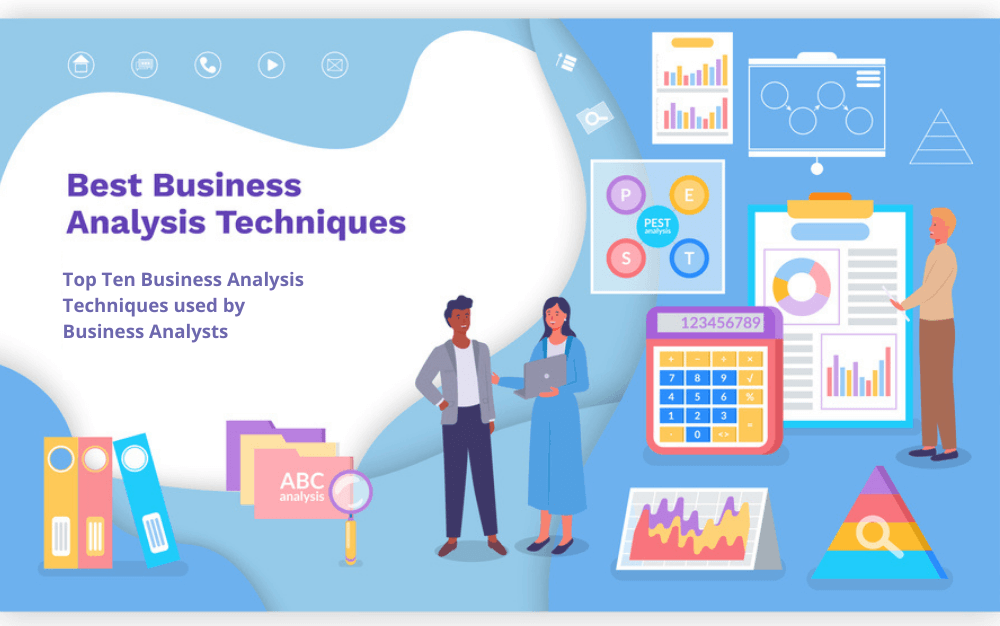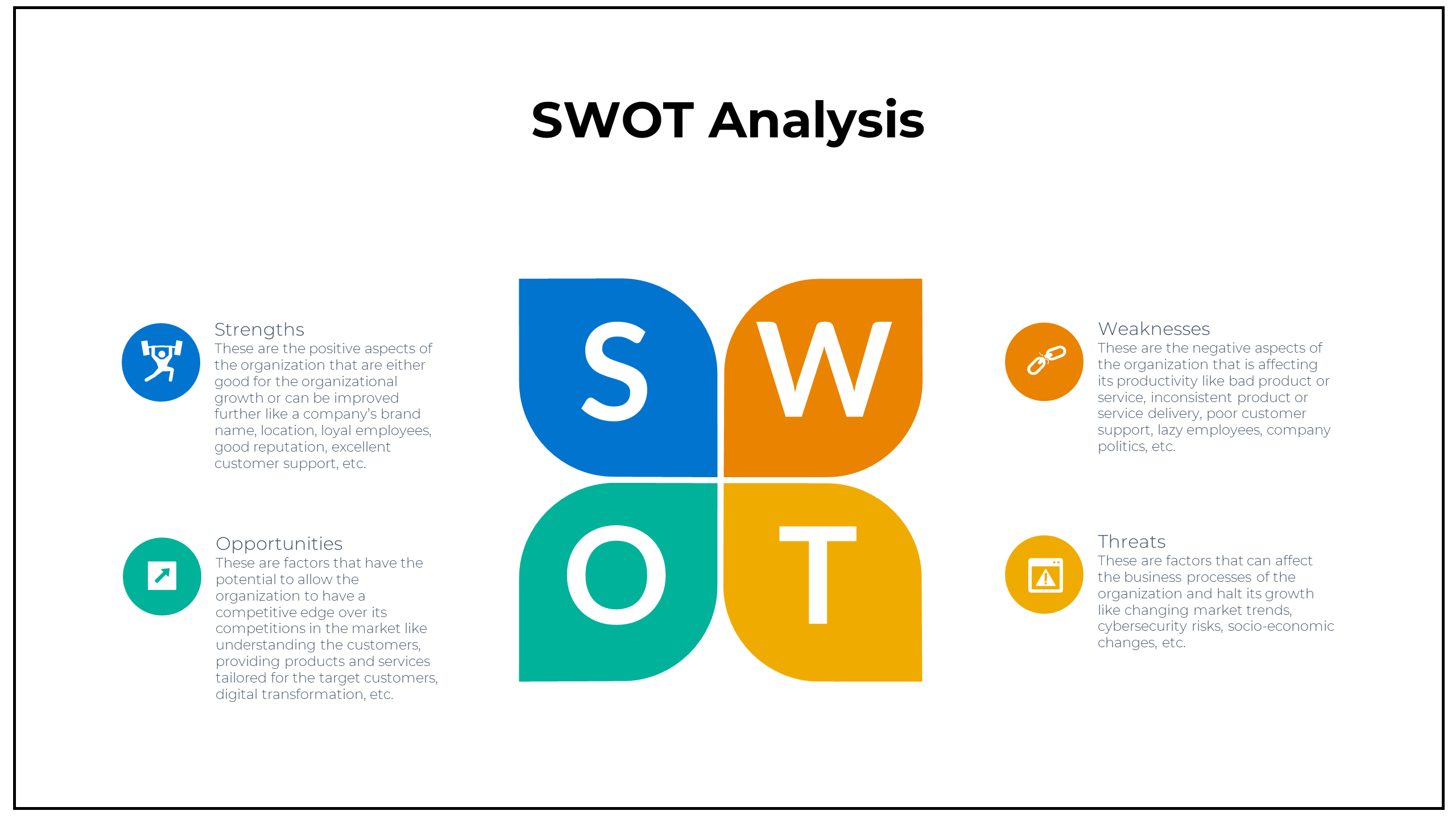In today’s technology-driven era, business enterprises and organizations of varying sizes and domains are constantly striving to improve their business processes. They are competing in a market that is fragile and fast-paced at the same time. Data analytics plays a major part in helping these organizations extract valuable information from technology and use it to transform their business processes. A business analyst utilizes data analysis and many other business analysis techniques to help its organization achieve business efficiency.

Jump ahead to
Role of a Business Analyst
A Business Analyst identifies the problems faced by the organization to improve its business processes. They are highly skilled and knowledgeable in finding the root causes of the problem and assist other professionals in the organization in formulating the best possible solution. Business analysts use data analysis and help align the results of the analysis with the objectives of the organization. While they have the required understanding of the business and its various processes, they also have the technical knowledge and use this to bridge the gap between business-related problems and find the appropriate technical solutions.
Along with the understanding of the requirements of the business enterprise, a business analyst understands its users’ requirements as well. Thus, the solutions created by the business analyst will fulfill the needs and objectives of both the organization as well as its users. Business analysts have multiple roles and can go beyond domains. They are not restricted to any industrial sector and help their organization in finding new opportunities. From identifying problems in the business process to formulating solutions for improvement, from improving the culture of the company to adding value to the product delivery, a business analyst’s roles encompass everything.
Business Analysis Techniques used by Business Analysts
A business analyst uses many tools and techniques to help improve their organization’s business efficiency. Since they use data that is collected in a systematic manner, the results are effective and accurate. Also, the solutions provided are backed by calculation rather than speculation, which gives it greater credibility. There are several business analysis techniques that are used by business analysts for improving the business processes of the organization. Some techniques are suitable for specific purposes and can be utilized during certain stages of a project.
Here are the 10 most effective business analysis techniques used by business analysts that help organizations in achieving business efficiency:
SWOT Analysis
A business analyst uses SWOT analysis to measure the strengths, weaknesses, opportunities, and threats of their organization. Strength and weakness are internal factors whereas opportunities and threats external factors. Understanding these internal and external factors helps organizations in finding the problems in the business processes while further improving the existing functions.

Business analysts divide the data collected under each segment to conduct analysis:
- Strength – These are the positive aspects of the organization that are either good for the organizational growth or can be improved further like a company’s brand name, location, loyal employees, good reputation, excellent customer support, etc.
- Weakness – These are the negative aspects of the organization that is affecting its productivity like bad product or service, inconsistent product or service delivery, poor customer support, lazy employees, company politics, etc.
- Opportunities – These are factors that have the potential to allow the organization to have a competitive edge over its competitions in the market like understanding the customers, providing products and services tailored for the target customers, digital transformation, etc.
- Threats – These are factors that can affect the business processes of the organization and halt its growth like changing market trends, cybersecurity risks, socio-economic changes, etc.
MOST Analysis
Business Analysts use MOST analysis to understand the organization’s objective and align the solutions to fulfill the objective. This business analysis technique stands for mission, objectives, strategy, and tactics. While mission and objectives demonstrate the mission and objectives of the organization, strategy and tactics describe the ways the solutions will ensure that the mission and objectives of the organization are fulfilled.
PESTLE Analysis
Business analysts PESTLE Analysis or PEST Analysis to focus on the political, economic, social, technological, legal, and environmental factors. These external factors impact the growth and the overall productivity of an organization. Thus, business analysts define these factors and formulate strategies to mitigate the risks caused by each factor.
CATWOE
It is a mnemonic that stands for the customer, actor, transformation, worldview, owner, and environment. Business analysts use this business analysis technique to understand the relationship between the stakeholders of the organization and its customers. It also focuses on identifying the problem areas in the relationship and formulating solutions to bridge the communication gap.
Business Process Modeling
This business analysis technique assists business analysts in understanding the business processes of the organization. Business process modeling is usually shown in a diagram and depicts the operations of the organization in a sequence. Organizations can improve their processes and workflow, reduce and stop overproduction, find new opportunities, and use digital transformation to improve their overall business efficiency using this technique.
Use Case Modeling
Business analysts uses the use case modeling business analysis technique to determine the system requirements from the customers’ perspective. It is mostly utilized in software development projects during the design phase. The use case model diagram includes system, use case, actors, association, and stereotypes. This visual representation helps the organization understand the impact of each process on the result.
User Stories
User stories are an effective business analysis technique that helps organizations understand their users through their feedback. Understanding the user requirements is essential to motivate and prioritize certain areas in the product or software development. It forms an integral part of the agile software development process.
Requirement Analysis
It is methodical and research-based process of analyzing the project’s requirements. The purpose of requirement analysis is to evaluate the project’s goals and compare them to the organization’s goals. Business analysts survey the stakeholders of the organization, understand their needs and priorities through this business analysis technique.
Non-functional Requirement Analysis
These are performed during the analysis stage of software development to test a software’s performance in terms of security, reliability, scalability, and accessibility. The solutions are then implemented after the analysis results are positive.
Brainstorming
It is a powerful business analysis technique that usually results in generating innovative solutions to the problems faced by the organization. Business analysts use this to collaborate with other professionals in the organization usually from diverse departments to generate ideas. Brainstorming emphasizes creative thinking and formulating solutions to complex organizational problems using diverse viewpoints which can also be developed by Business Analytics with Excel Masterclass.
Conclusion
Business analysts have skills and knowledge in finding innovative solutions to tackle the obstacles in the business processes of an organization. They play an important part in helping their organization achieve business efficiency where every process of the business is efficient. Business analysis and conducting regular analysis of the business with the help of a proficient business analyst can be very effective for the success of the organization. Individuals and working professionals can utilize our training and certification course in PMI-PBA (Project Management Institute-Professional in Business Analysis) to earn the industry-recognized credential in Business Analysis. As a PMI-PBA Certified professional, you can help transform your organization’s business processes and achieve career growth.



